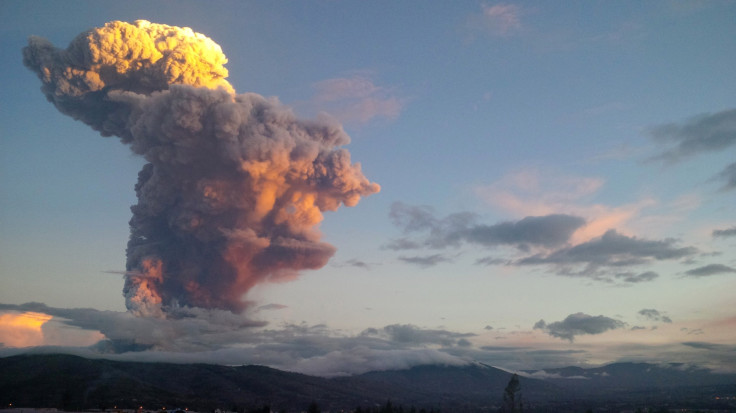Tungurahua Volcano In Ecuador Spews Ash 6 Miles High, Explosive ‘Throat Of Fire’ Eruption Caught On Tape [VIDEO]

Ecuador’s Tungurahua Volcano put on quite a performance Friday when it erupted following a five-minute explosion. The volcano, whose name translates to ‘Throat of Fire’ in the local Quechua language, breathed a plume of smoke and ash 10 kilometers, or 6 miles, into the air and shot rock and hot gas onto the volcano’s northern flank.
According to Associated Press, the Tungurahua eruption occurred around 6:10 p.m. local time and was met with a second explosion that lasted four minutes and included several smaller tremors. The series of eruptions affected a third of Ecuador’s provinces and temporarily shuttered a regional airport. No injuries were reported.
The 5,023-meter-tall volcano, located about 140 kilometers south of the capital city of Quito, is one of eight active volcanoes in Ecuador. The South American country is located on the Pacific Ring of Fire, a horseshoe-shaped series of oceanic trenches, volcanic arcs and plate movements that stretches from the tip of South America over to Southeast Asia. The Ring of Fire contains over 75 percent of Earth’s active and dormant volcanoes.
Residents of the volcano’s neighboring provinces captured footage of the Tungurahua eruption and posted their videos and photos across various social media.
[FOTO] Impresionante imagen de la erupción del volcán Tungurahua en Ecuador/ Foto de Daya Camacho. pic.twitter.com/GZvXmEWzFt
— Tweet Quake (@tweet_quake) April 5, 2014Awesome scenes last night as volcano #Tungurahua blew her top ... Gas masks and evacuation packs at the ready! pic.twitter.com/e560KCTZIb
— Sophie Griffiths (@TTGTravelQueen) April 5, 2014Tungurahua came to life in August of 1999 following a long period of inactivity. The volcano has erupted several times ever since, including a number of major eruptions. The Irish Times noted that in 2006 a toxic cloud created by Tungurahua killed four people and left two others missing.
Watch the Tungurahua volcano’s Friday eruption in this video posted to YouTube:
© Copyright IBTimes 2024. All rights reserved.






















